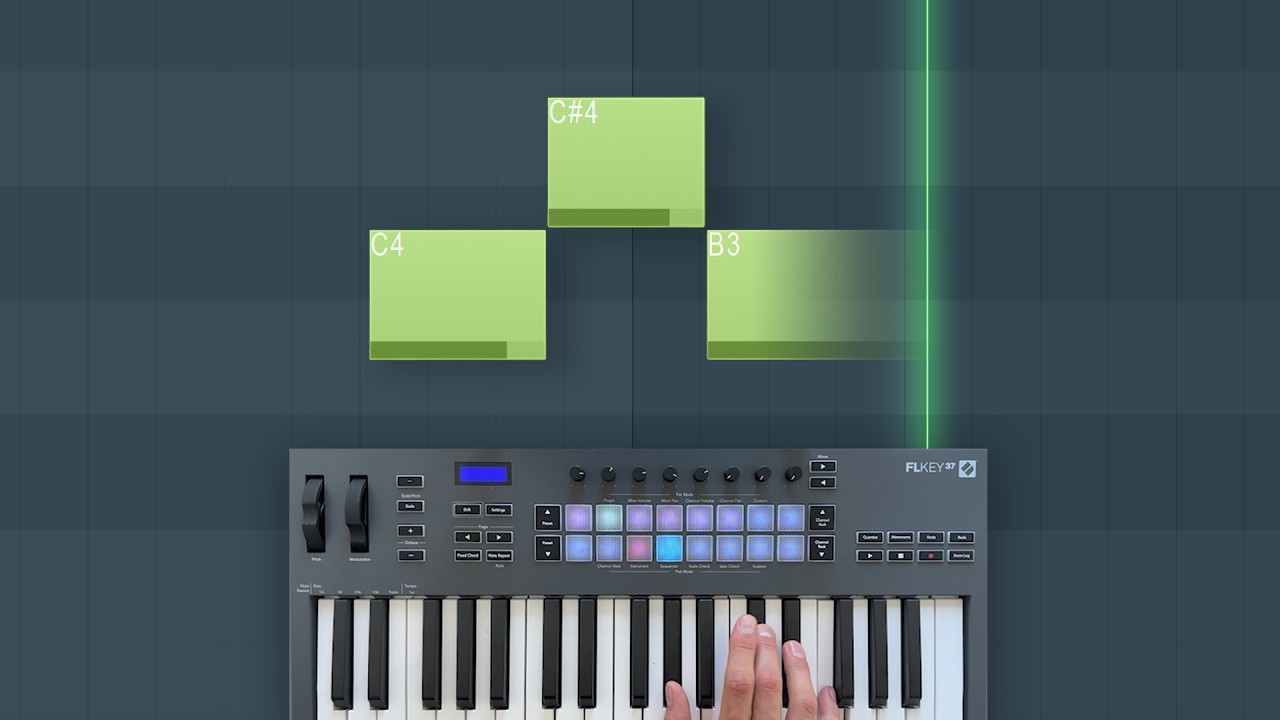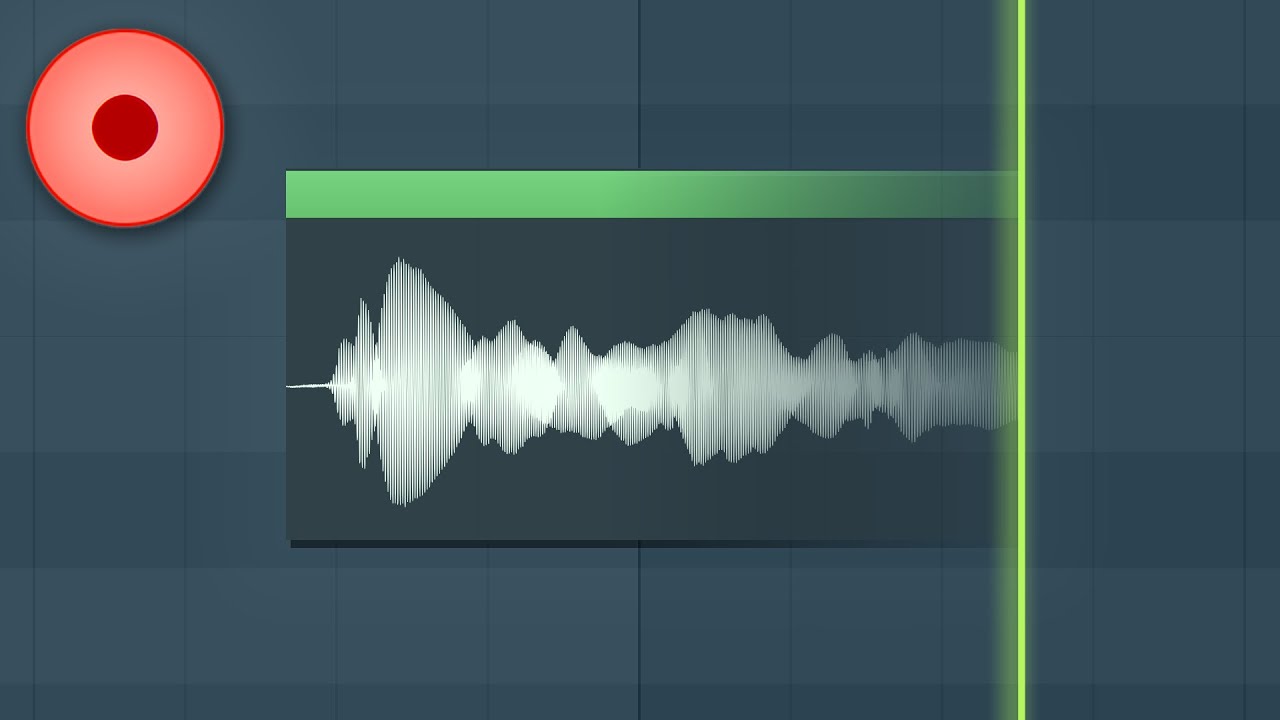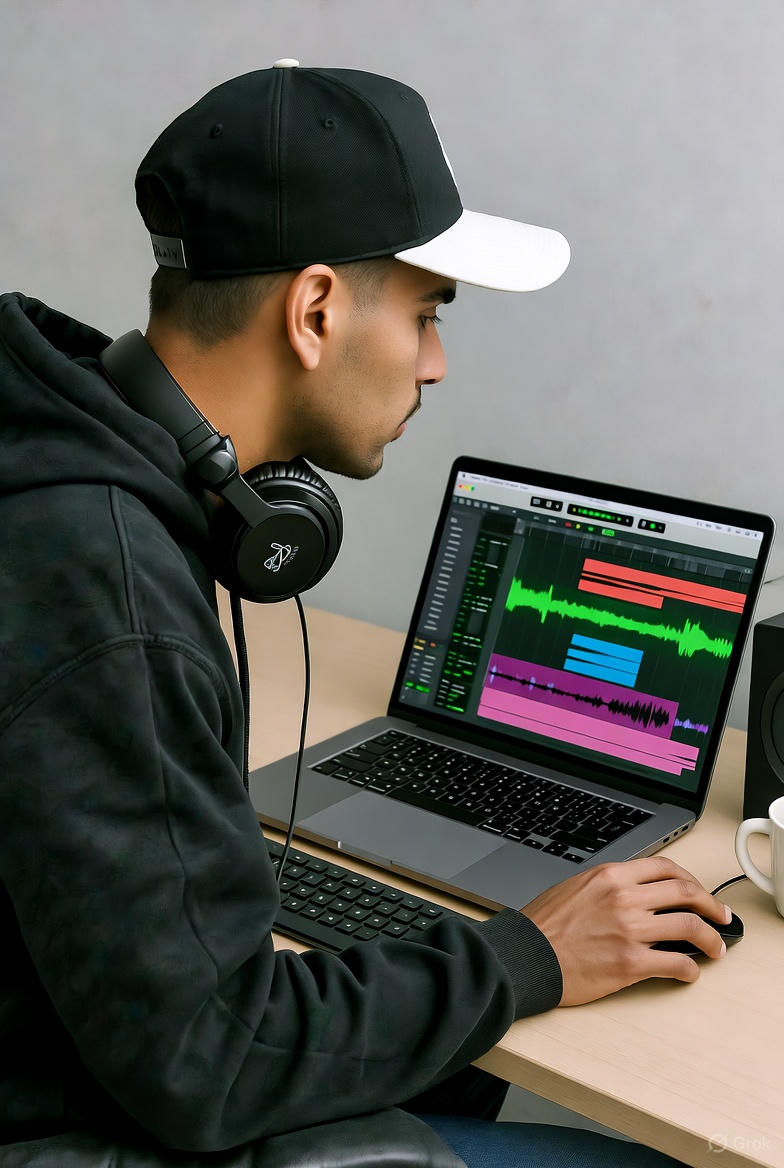!Let Us HELP YOU!
We have a lot of curated content on this blog.
Take this simple 20 second Quiz to Help You
Find The Exact Content You Are Looking For!
Selling beats online is exploding and producers are now earning more than ever before. Recent reports show some beatmakers earning over $100,000 a year from digital sales alone. Most people assume you need to spend a fortune on fancy studio gear or have major industry connections to get started. Surprisingly, the real breakthroughs are happening with simple home setups and smart marketing—and that’s shaking up the music business in ways nobody expected.
Table of Contents
- Step 1: Set Up Your Music Production Equipment
- Step 2: Create High-Quality Beats Using FL Studio or Logic Pro X
- Step 3: Develop Your Unique Sound and Style
- Step 4: Promote Your Beats on Social Media and Platforms
- Step 5: Sell Your Beats on Marketplaces and Build a Brand
Quick Summary
| Key Point | Explanation |
|---|---|
| 1. Invest in quality equipment | A reliable computer, audio interface, and monitors are essential for professional sound and efficiency in music production. |
| 2. Master your DAW for beat creation | Understand the features and shortcuts of your chosen DAW like FL Studio or Logic Pro X to enhance your production speed and quality. |
| 3. Develop a unique musical style | Experiment with different sounds and techniques to create a signature sound that distinguishes you from other producers in the market. |
| 4. Promote your beats effectively online | Build a cohesive brand on social media, using platforms like TikTok and YouTube to showcase and engage with your audience. |
| 5. Utilize digital marketplaces for sales | Set up multiple sales channels with clear licensing options to attract various clients and ensure steady revenue from your beats. |
Step 1: Set Up Your Music Production Equipment
Building a solid music production setup is your foundation for creating and monetizing beats in 2025. Your equipment will determine the quality, efficiency, and professional sound of your productions. Whether you’re a beginner or looking to upgrade, selecting the right gear is crucial for turning your beat-making passion into a profitable venture.
Start by investing in a reliable computer with strong processing power. For beat production, you’ll want a machine that can handle complex digital audio workstations (DAWs) and multiple plugin tracks without lagging. Look for a laptop or desktop with at least an Intel i5 or AMD Ryzen 5 processor, minimum 16GB RAM, and a dedicated graphics card. Apple MacBook Pro or Windows-based systems like the Dell XPS series work exceptionally well for music production.
Next, focus on your audio interface and monitoring setup. A quality audio interface bridges your computer and professional audio equipment, ensuring crystal clear sound recording and playback. Check out our guide for budget-friendly home studio setups to understand what equipment provides the best value. Brands like Focusrite Scarlett and PreSonus AudioBox offer excellent entry-level interfaces that deliver professional sound without breaking the bank.
Your monitoring system is equally critical. Invest in a pair of studio monitor speakers or high-quality studio headphones that provide flat, accurate sound representation. Avoid consumer-grade headphones that color the audio. Models like Audio-Technica ATH-M50x or Beyerdynamic DT 770 Pro offer exceptional sound clarity and comfort for long production sessions. If you’re working in a shared space or have noise restrictions, closed-back headphones can be an excellent alternative to traditional studio monitors.
Finally, consider your MIDI controller and additional peripherals. A solid MIDI keyboard allows you to input melodies, chords, and drum patterns directly into your DAW. Look for controllers with weighted or semi-weighted keys if you want a more realistic piano feel, or opt for pad-based controllers like the Akai MPK Mini if you’re focused on creating hip-hop and electronic beats. Your controller should integrate seamlessly with your chosen software and provide intuitive workflow controls.
Remember, your equipment is an investment in your beat-making career.
This table outlines essential equipment for a home beat-making studio, including minimum recommended specifications and their main purpose in the production process.
| Equipment | Minimum Recommendation | Purpose |
|---|---|---|
| Computer | Intel i5/AMD Ryzen 5, 16GB RAM | Run DAWs, plugins, and manage workflow |
| Audio Interface | Focusrite Scarlett/PreSonus AudioBox | High-quality audio input/output |
| Studio Monitors/Headphones | Audio-Technica ATH-M50x/Beyerdynamic DT 770 Pro | Accurate monitoring of sound |
| MIDI Controller | Weighted/semi-weighted keys or pad-based | Input melodies, drums, and patterns |
| DAW Software | FL Studio or Logic Pro X | Core beat production environment |
Step 2: Create High-Quality Beats Using FL Studio or Logic Pro X
Creating professional beats requires mastering your digital audio workstation (DAW) and understanding the nuanced techniques that transform basic sounds into marketable tracks. Learn the essential techniques for beat creation in either FL Studio or Logic Pro X to develop a signature sound that stands out in the competitive music production landscape.
Start by selecting a primary DAW that matches your workflow and musical style. FL Studio offers an intuitive pattern-based approach ideal for hip-hop and electronic genres, while Logic Pro X provides robust recording and mixing capabilities perfect for more complex arrangements.
Below is a comparative table summarizing popular DAWs for beat making, including their workflow styles and key strengths, to help you decide which fits your production needs best.
| DAW | Workflow Style | Key Strengths |
|---|---|---|
| FL Studio | Pattern-based, intuitive | Ideal for hip-hop/electronic, easy sequencing |
| Logic Pro X | Track-based, advanced | Robust recording/mixing, great for arrangements |
| Ableton Live* | Session/linear | Performance oriented, flexible for all styles |
*Note: Ableton Live is mentioned contextually as DAW alternatives in the beat-making scene, but the article mainly highlights FL Studio and Logic Pro X. Familiarize yourself with your chosen software’s interface, exploring drum sequencers, virtual instruments, and plugin environments. Spend time understanding keyboard shortcuts and workflow optimization to increase your production speed and efficiency.
Develop a systematic approach to beat construction by establishing a solid foundational rhythm. Begin with creating a strong drum pattern that serves as the backbone of your beat. Layer kick drums, snares, hi-hats, and percussion elements with precision, paying attention to timing, velocity, and groove. Experiment with swing settings and quantization to inject human-like rhythmic variations that prevent your beats from sounding too mechanical. According to recent research on neural music generation, understanding the subtle nuances of rhythm can significantly enhance the emotional impact of your productions.
Next, focus on melodic elements and harmonic structures. Utilize virtual instruments, sampled sounds, and synthesizers to craft unique melodic sequences that complement your rhythmic foundation. Layer complementary sounds, experiment with chord progressions, and develop distinctive melodic hooks that give your beats a memorable character. Pay careful attention to sound selection, ensuring each element contributes to a cohesive and professional-sounding track.
WEBSITE RESOURCES FOR MUSICIANS
Mastering your signal chain and mix is crucial for creating beats that sound polished and radio-ready. Apply strategic EQ, compression, and subtle audio effects to each track, maintaining clarity and preventing frequency masking. Learn to create space within your mix by carefully balancing volume levels and using stereo positioning. Remember that professional-quality beats are 50% composition and 50% mixing technique.
Finally, develop a workflow that allows you to rapidly prototype and refine beats. Create template projects with pre-configured mixing chains, instrument racks, and effect settings to streamline your production process. Consistently challenge yourself to complete beats within specific time constraints, which will improve your speed and creative decision-making skills.
Step 3: Develop Your Unique Sound and Style
Developing a distinctive sound is your musical fingerprint in the competitive beat-making market. Your unique style will set you apart from thousands of other producers and attract artists and listeners who resonate with your specific sonic aesthetic. Unlock advanced sampling techniques to add depth and originality to your productions.
Start by studying the techniques of producers you admire while consciously avoiding direct imitation. Analyze the subtle characteristics that make their beats memorable – whether it’s a specific drum pattern, unconventional sample selection, or distinctive mixing approach. Listen critically to tracks across multiple genres, understanding how different producers manipulate sound, rhythm, and texture to create emotional responses.
Experimentation is key to developing your signature sound. Challenge yourself to create beats using unexpected sample sources, unconventional instrument combinations, or unique processing techniques. Record your own sounds – street noises, vintage instrument recordings, or custom percussion – to inject authentic character into your productions. Push beyond standard genre boundaries, blending elements from hip-hop, electronic, classical, and world music to create something truly original.
According to research on musical identity, personal sound emerges through consistent creative exploration and technical mastery. Develop a workflow that encourages musical risk-taking. Set weekly challenges for yourself, such as creating a beat using only sounds from a single source, or reimagining a classic track in a completely different genre. These exercises will expand your creative muscles and help you discover unique production approaches.
Technical proficiency supports creative expression. Master advanced sound design techniques like complex layering, advanced signal routing, and creative audio effects processing. Learn to manipulate samples beyond their original context, transforming mundane sounds into extraordinary musical elements. Invest time in understanding advanced mixing techniques that allow your beats to sound professional while maintaining their unique character.
Document your musical journey by creating a consistent portfolio that showcases your evolving style. Maintain a collection of your best beats, highlighting the progression of your sound over time. This not only helps you track your artistic growth but also provides potential clients and collaborators a comprehensive view of your musical capabilities.
Remember that developing a unique sound is an ongoing process. Stay curious, remain open to inspiration from unexpected sources, and never stop refining your craft. Your distinctive style will become your most powerful marketing tool in the competitive beat-making marketplace.
Step 4: Promote Your Beats on Social Media and Platforms
Promoting your beats in 2025 requires a strategic approach that leverages multiple digital platforms and creates a compelling online presence. Your marketing strategy is as critical as the beats themselves, transforming your musical talent into a potential revenue stream. Discover advanced music marketing techniques to maximize your reach and engagement.
Begin by establishing a professional and cohesive brand across social media platforms. Create dedicated music production accounts on Instagram, TikTok, YouTube, and SoundCloud that showcase your unique sound and personality. Develop a consistent visual aesthetic that reflects your musical style – this means curating high-quality graphics, maintaining a uniform color palette, and creating engaging content that tells your production story.
According to recent research on digital music platforms, TikTok has become a pivotal channel for music discovery. Craft short, engaging video content that demonstrates your beat-making process, offers quick production tips, or showcases 15-30 second beat snippets. These micro-content pieces can rapidly expand your audience and create viral potential. Experiment with trending challenges, collaborate with other creators, and use relevant hashtags to increase your content’s discoverability.
Develop a content strategy that provides value beyond just promoting beats. Share behind-the-scenes production insights, tutorial clips, and personal stories that connect you with potential clients and fans. Authenticity drives engagement in the digital music marketplace. Create a mix of content that includes technical demonstrations, creative processes, and personal narratives that humanize your brand.
Utilize music distribution platforms like BeatStars, Airbit, and Spotify to showcase and monetize your beats. These platforms not only provide sales channels but also offer built-in marketing tools and analytics to track your performance. Set competitive pricing for your beats, offering various licensing options that cater to different artist budgets and usage requirements.
Network actively within online music communities. Join producer forums, participate in online beat battles, and engage with potential clients and collaborators. Attend virtual music production conferences and webinars to expand your professional network and stay updated on industry trends. Building relationships is crucial in transforming your beat-making from a hobby to a sustainable business.
Consistency is key in digital music promotion. Develop a content calendar that ensures regular uploads across platforms, maintaining audience interest and algorithmic visibility. Track your engagement metrics, analyze which content resonates most with your audience, and continuously refine your promotional strategy. Remember that building a significant online presence takes time, patience, and persistent, high-quality content creation.

Step 5: Sell Your Beats on Marketplaces and Build a Brand
Transforming your beat-making skills into a profitable business requires strategic marketplace positioning and intentional brand development. Your online presence becomes your most valuable asset in attracting potential clients and establishing credibility in the competitive music production landscape. Explore comprehensive beat selling strategies to maximize your revenue potential.
Select multiple digital marketplaces to diversify your sales channels. Platforms like BeatStars, Airbit, and Traktrain offer specialized environments for beat producers to showcase and sell their music. Each platform has unique features, commission structures, and audience demographics. Research thoroughly and create professional profiles that highlight your distinctive sound, offer clear licensing options, and present a cohesive visual brand identity.
According to recent research on digital music economics, implementing flexible pricing and licensing models can significantly enhance your revenue potential. Develop a tiered licensing approach that caters to different artist budgets and usage requirements. Offer options ranging from basic MP3 leases to exclusive rights, each with transparent pricing that reflects the value of your intellectual property. Clearly communicate usage rights and restrictions to build trust with potential buyers.
Establish a pricing strategy that balances market competitiveness with the quality of your productions. Analyze pricing structures of successful producers in your genre, but avoid undervaluing your work. Consider factors like track complexity, your growing reputation, and unique sound characteristics when setting prices. Start with moderate pricing and adjust based on market response and demand for your beats.
Build a comprehensive online portfolio that showcases your versatility and technical prowess. Create detailed beat previews that demonstrate the full potential of each track. Include high-quality audio snippets, showcase potential vocal or instrumental arrangements, and provide context about the beat’s style and potential applications. Professional presentation can significantly influence a potential buyer’s purchasing decision.
Develop a robust customer service approach that sets you apart from competitors. Respond promptly to inquiries, offer clear communication about licensing terms, and provide fast, professional beat delivery. Consider offering custom beat modification services or consultation to add extra value for your clients. Positive customer experiences lead to repeat business and valuable word-of-mouth referrals.
Maintain meticulous records of your sales, licensing agreements, and customer interactions. Implement a systematic approach to tracking your financial performance, understanding which beats sell most consistently, and identifying trends in your market. This data-driven approach allows you to continuously refine your beat production and sales strategy, ensuring long-term success in the digital music marketplace.
Ready to Turn Your Beatmaking Passion Into Real Income in 2025?
Building high-quality beats is only half the journey. Many creators get stuck on what comes next: choosing the right gear, mastering DAWs like FL Studio or Logic Pro X, and finding the best places to sell their sound. If you are feeling overwhelmed by technology choices or unsure where to showcase your unique style, you are not alone. The music landscape moves fast. You need a trusted resource that grows with your skills and gives you access to up-to-date guides, gear reviews, and real-world marketing strategies for all genres.
You do not have to figure it out solo. Head over to How To Make Beats Blog right now for clear tutorials on FL Studio beat making, unbiased audio equipment reviews, and practical promotion advice. Start building your own step-by-step plan and let your music earn for you. Your next breakthrough beat starts here.
Frequently Asked Questions
What equipment do I need to start making beats in 2025?
To start making beats in 2025, you need a reliable computer with strong processing power, an audio interface for sound recording, studio monitor speakers or high-quality headphones, and a MIDI controller for inputting melodies and patterns. Consider investing in versatile and professional-sounding gear as your skills grow.
What digital audio workstations (DAWs) are recommended for beat making?
For beat making, popular DAWs include FL Studio and Logic Pro X. FL Studio is favored for its intuitive pattern-based approach, while Logic Pro X is preferred for its advanced recording and mixing capabilities. Choose the one that aligns with your workflow and style.
How can I develop my unique sound as a music producer?
To develop your unique sound, study techniques from producers you admire without imitating them directly. Experiment with unconventional samples, blend genres, and record your own unique sounds. Consistent creative exploration and technical mastery will help you establish a distinctive musical identity.
What are effective ways to promote my beats online?
Promote your beats by establishing a professional brand on social media platforms like Instagram, TikTok, and YouTube. Share engaging content showcasing your production process, and utilize music distribution platforms for wider reach. Regularly network within online music communities to build connections and attract potential clients.



